Drive with Confidence: Master the Art of Conventional Car Maintenance
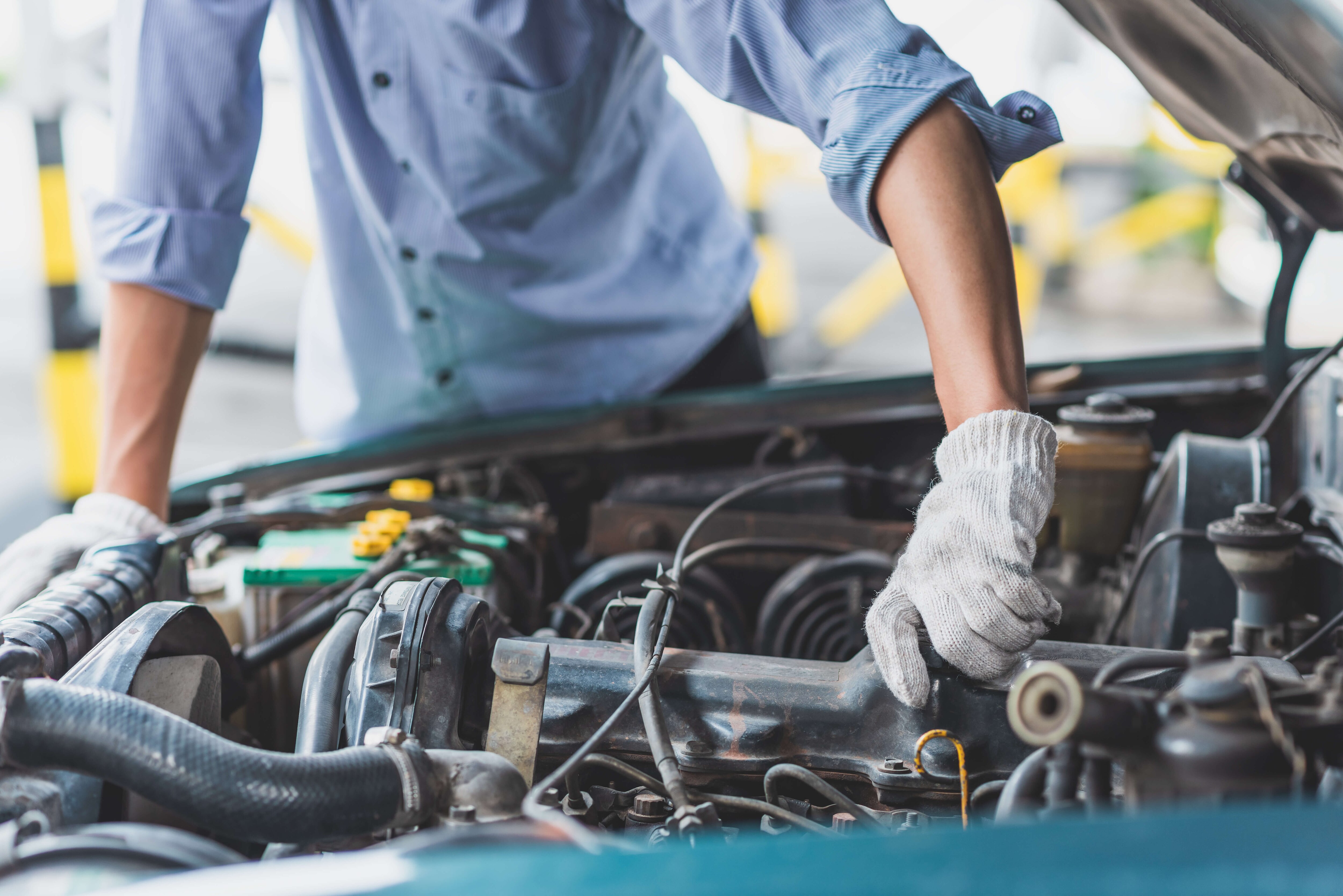
Regular maintenance isn't just a suggestion—it's your car's lifeline.
Also, imagine gliding on the road worry-free as your well-tended vehicle responds with purring precision. That's the power of proactive upkeep.
Yet, like many drivers, you might wonder when to service your car or what magic keeps it running like a dream.
In this friendly guide, we'll walk you through a simple Car Maintenance Checklist with must-know tips to keep your vehicle in good condition.
Maintaining your car has never been more fun and educational. Let's go!
Understanding the Basics of Car Maintenance
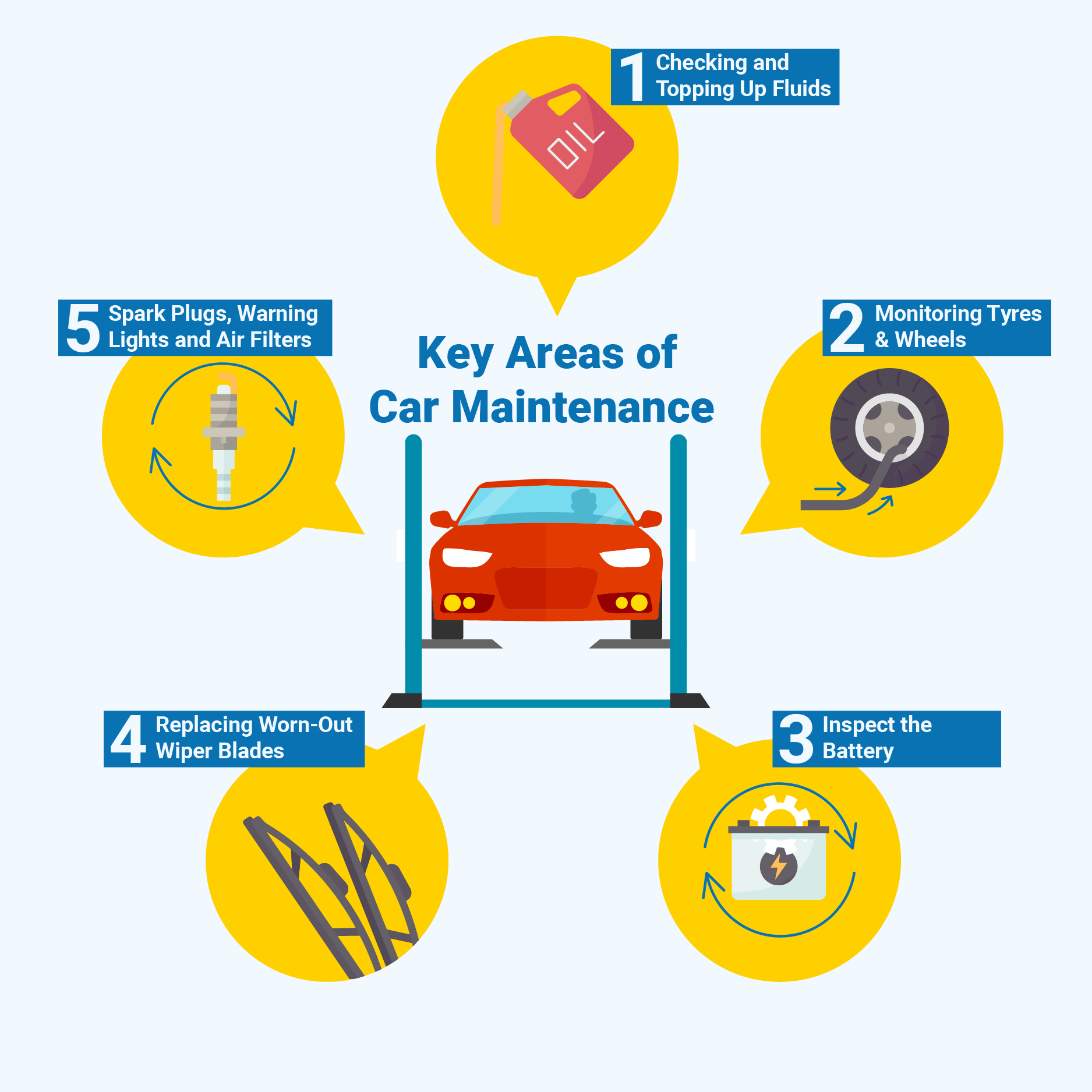
Let's start with some key areas that should be on every car owner's checklist.
A. Checking and Topping Up Fluids
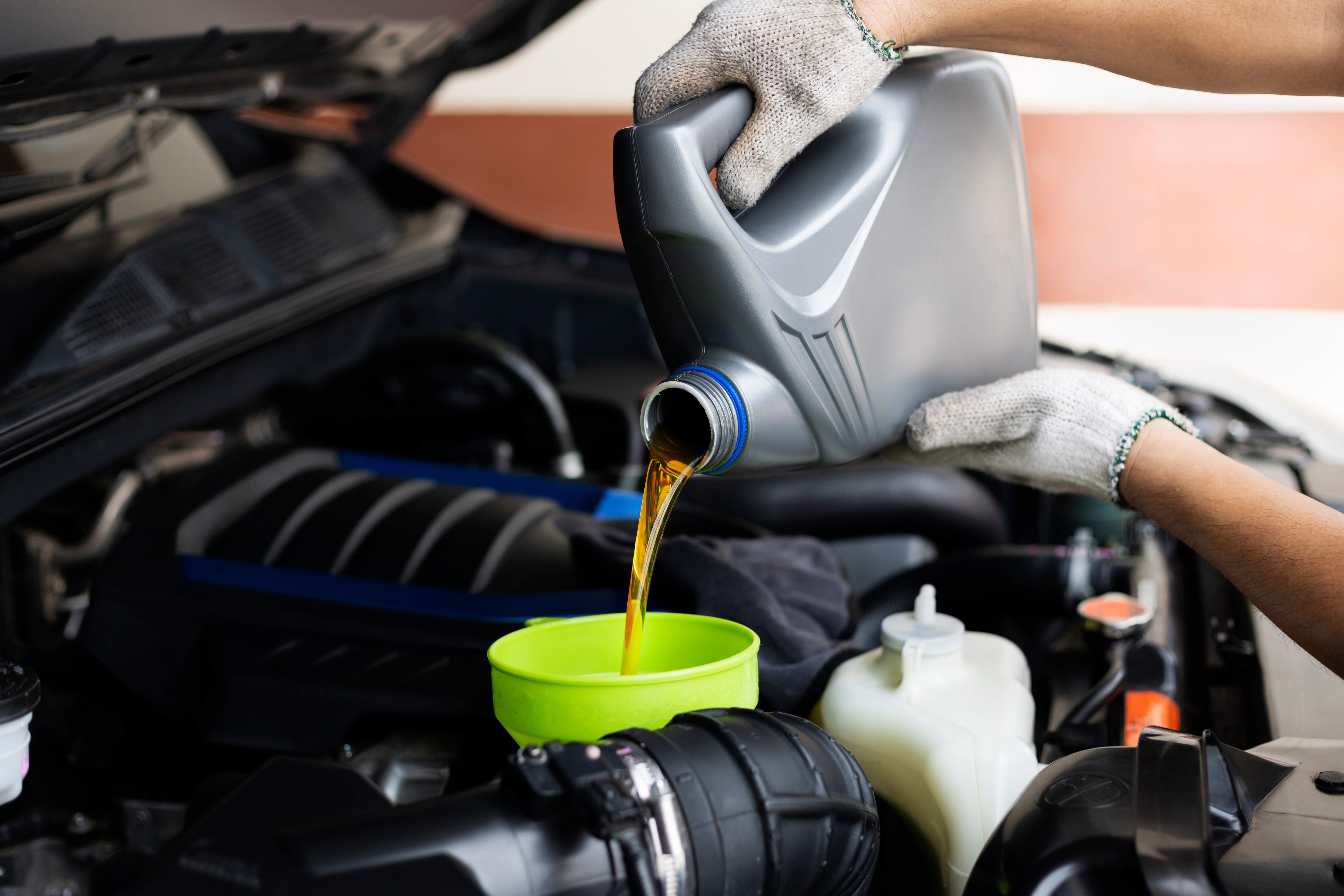
Engine Oil
Engine oil is crucial for your car's health. A monthly check is a small habit that guards against major engine troubles.
Remember, fresh oil should look like honey (light yellow or golden); if it's starting to resemble your morning coffee, it's time for a change.
How to check:
First, park your car on level ground—this helps you get the most accurate oil level reading. Now, it's time to warm things up.
Fire up the engine and let it run for a few minutes; this thins the oil, allowing for a more precise assessment. Once warmed, turn off the engine and pop the hood (bonnet).
Locate the engine oil cap and pull out the dipstick. It's your trusty tool for this task. Please give it a good wipe to clear off any old oil marks.
Then, reinsert the dipstick back in. This is where precision counts. Pull it out again and peek where the oil mark hits—it should sit comfortably between the low and high indicator marks on the dipstick. If it's flirting with the low end, you'll want to top it off.
Not all engine oils are created equal, so check your owner's manual for the ideal oil grade. And keep in mind that fresh oil is like a fountain of youth for your car.
When to service:
Stick to the golden rule: a complete oil change every 10,000km or as your manufacturer recommends.
Transmission Fluid
Transmission fluid is the lifeblood of your car's gear-shifting capabilities, just as vital as the oil coursing through your engine.
Picture this: Your transmission is the heart of gear changes, smoothly transitioning you from park to drive, reverse to neutral. It's a key player in your car's performance, and without it, you could be looking at a hefty bill for repairs or replacement.
How to check:
Now, before you do anything, grab your owner's manual. It's your go-to guide for the correct fluid for your vehicle.
And here's a pro tip: Some modern cars boast sealed-for-life transmissions, which means you can skip the fluid check. If that's not the case for your ride, let's find that dipstick.
Please don't confuse it with the engine oil stick; look for the tell-tale symbols that set it apart.
It's time to play detective with your car parked on level ground and the engine purring idle.
Pull the dipstick, wipe it, and reinsert it for a clean read. When you pull it out again, look for the fluid level and its condition.
When to service:
A quick colour check against a white backdrop can reveal a lot. You're aiming for a reddish-pink hue—a sign of a happy transmission.
If it's taken on a brownish tinge, think of it as your car's way of saying, "I'm thirsty for some fresh fluid." But if it's dark and ominous or carries a whiff of something burnt, that's your cue to head to a mechanic, pronto!
Running low? Top it off to the mark specified in your manual.
Coolant
Your car's coolant system is the unsung hero that keeps your engine from turning into a metal meltdown.
Nestled within the heart of your radiator, this system is your vehicle's climate control, ensuring the engine stays cool and prevents it from overheating.
How to check:
But before you dive in, let's talk safety. Always wait for your engine to cool down before you even pop the hood. Trust us, boiling scalding coolant is not the kind of hot spring experience anyone enjoys.
Ready to take a peek? Twist off the radiator cap in the engine compartment (it's cool, you've checked, right?) and flash a light inside.
When to service:
If you spot liquid, you're golden—your coolant level is on point. If it's looking a bit dry, it's time to top off with the proper water and coolant mix for your car's make and model.
You wouldn't wait for a heatwave or El Niño to fix your home's AC, right?
The same goes for your car. Regular coolant check-ups are a breeze. Aim to refresh your coolant after the first 210,000km or 120 months, then keep it on your radar every 30,000km or 24 months after that.
Power Steering Fluid
Is your steering wheel feeling stubborn lately?
That extra effort you put into turns could indicate that your power steering fluid needs attention. Just like you keep tabs on your car's oil, checking and topping up power steering fluid is a breeze—and crucial for smooth handling.
How to check:
Before you dive in, warm up your car by letting it idle until the temperature gauge indicates it's at an average operating level. This ensures you get an accurate read on the fluid level.
Once warmed up, give the steering wheel a few turns to each side, then turn off the engine.
Now, let's find that power steering fluid reservoir. Your car's manual will show you where to look under the bonnet. When you locate the reservoir, you'll see markings on the side of a clear container or find a dipstick, much like the one for your engine oil.
When to service:
Take a peek at the fluid's colour, too. A healthy hue is red or pink, but if it's turned dark, it's time for a flush. No worries; your local workshop can handle the flush and replacement.
If the level's low, top it to the sweet spot between the minimum and maximum markers, then secure the cap back in place.
Remember, every car has its rhythm for fluid changes—typically every five years or 100,000km, but your manual will have the details.
Windscreen Wiper Fluid
Imagine driving on a rainy, muddy day or through a swarm of insects without a clear view – not the safest scenario, right? That's why checking your wiper fluid is crucial in your car maintenance checklist.
How to check:
Pop the bonnet and peek at the wiper fluid container – it's usually easy to spot and transparent. There is no need to unscrew the cap; a glance will tell you if it's time for a top-up.
When to service:
If the level dips below halfway, that's your cue. Fill it up to about three-quarters, and you're all set.
Brake Fluid
Never underestimate the power of healthy brake fluid—it's your silent guardian every time you hit the road.
How to check:
Checking it is simple, especially in newer models with their clear reservoirs. It takes a glance to ensure the fluid is at the "full" line.
You're looking for a clear fluid with a slight tint—maybe green, blue, or gold. It's a good habit to check every three to four months; think of it as a quick health check for your car.
Have you got an older ride with an opaque container? No worries—pop the top and peek inside.
When to service:
If the level's shy of the minimum, follow your car manufacturer's advice.
But here's a heads-up: if you're topping off more often than usual, it's a red flag. It could mean your brake pads are worn out and must be professionally serviced.
Remember, brake fluid is also toxic. Handle it with care and always wash up afterwards.
B. Monitoring Tyres & Wheels
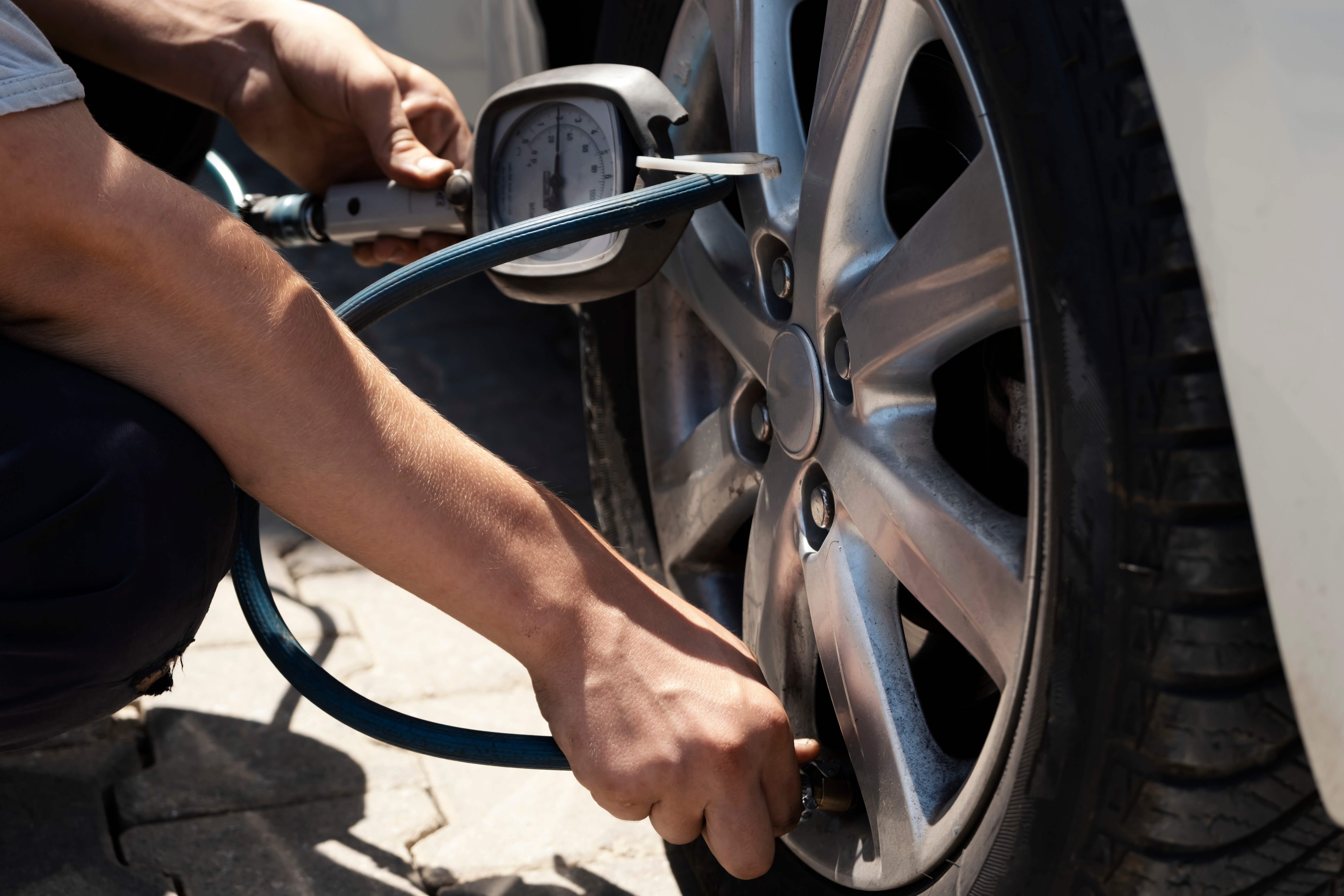
Tyre Pressure
Your tyres deserve a spotlight, too. Think of them as the trusty shoes of your vehicle—they grip the road, cushion your ride, and support the car's weight. And let's not forget your spare tyre, too.
How to check:
Keeping your tyres at their best is straightforward: stay on top of their pressure. It's not just about avoiding a flat tyre; proper inflation is vital to extending their life span and ensuring a smooth journey.
You'll find the ideal tyre pressure etched on a placard at the bottom of the driver's front door frame, or check your owner's manual.
When to service:
Too much air and you're risking a dramatic blowout. Too little, and you're throwing money away on extra fuel—not to mention wearing them out sooner.
Please give them a quick check every two weeks and definitely before you hit the road for a long trip.
Tread Depth
Next up on your car maintenance checklist is a crucial safety feature: the tread depth of your tyres.
Here in Malaysia, there is a legal minimum for tread depth that is no less than 1.6mm. It's not just about meeting legal standards – it's about keeping you and your passengers out of harm's way. It’s also recommended that you should have deeper treads on the rear tyres of your vehicle for better handling and tighter grip.
How to check:
How can you tell if it's time for a tyre change? It's simple. Your tyres have built-in tread depth indicators nestled within the grooves.
When to service:
When the tread wears down to the level of these indicators, it's your cue for a tyre update.
But don't stop there. Give your tyres a once-over for any signs of cracks or bulges. These red flags mean there are underlying issues with your car's suspension – and you'll want to address them promptly.
Tyre Rotation
Like your favourite pair of sneakers, tyres don't wear down evenly. For example, the tires of a front-wheel drive vehicle will wear out faster, while the reverse is true for rear-wheel drive vehicles.
That's where the clever trick of tyre rotation comes in—think of it as giving your car a fresh pair of legs!
Here's the scoop: switching the front tyres to the back and vice versa ensures that all four get an even workout. Why does this matter? It's not just about extending their life (which it does brilliantly); it's also about keeping your ride smooth and steering clear of those pesky vibrations that can turn a drive into a drag.
How to do it?
You want to leave it to the professional as they have the right tools for the job.
When to service:
Rotating tyres every 8,000 to 10,000 kilometres is the sweet spot. Mark it on your car maintenance checklist, and you're good to go.
Wheel Alignment
Wheel alignment is another critical item on your car maintenance checklist, which is all about precision and balance. Your car can only drive straight if its wheels align and sync.
Wheel alignment involves adjusting the angles of your wheels so they're perfectly in tune with your car's suspension and camber.
Bumps and potholes are the nemesis of alignment, gradually nudging your wheels into awkward positions. This can lead to quicker tyre wear, a shaky ride, and an unsafe, unstable ride.
If your car drifts left or right, some of your tires wear out more than the others, or your steering wheel is crooked when driving straight; then it's high time for an alignment check.
When to service:
Now, aligning wheels isn't a DIY job – a professional alignment every 8,000km to 10,000km or every six months can keep your car running true and extend the life of your tires.
Wheel Balancing
Feeling a strange vibration in your steering wheel or seat as you cruise down a straight road?
It's not your alignment—your tyres are likely out of balance.
Picture this: your tyres and rims might look perfectly round, but tiny weight differences can reduce their balance. It's like a washing machine with a heavy towel on one side during the spin cycle—things get shaky.
Here's the fix: a specialist uses precision equipment to pinpoint the lighter side of your tyre and attaches just enough counterweight to even things out, restoring a smooth, vibration-free ride.
This balancing act is often paired with wheel alignment to ensure your tyres wear evenly, boosting their lifespan.
Observe the Brakes and Rotors
Brakes aren't just about the pedal and fluid (which we discussed before); the pads and rotors do the heavy lifting. These guys work together to create the friction that stops your car, and like any hardworking team, they wear out over time.
If you're muscling the brake pedal more than usual, catch a whiff of something burning, or hear a high-pitch squeal, it's your car's way of saying, "Hey, check the brakes!"
When to service:
While brake pads can go the distance—up to 40,000km for some—you'll want to peek at your car's manual for the manufacturer's recommendation.
C. Inspect the Battery
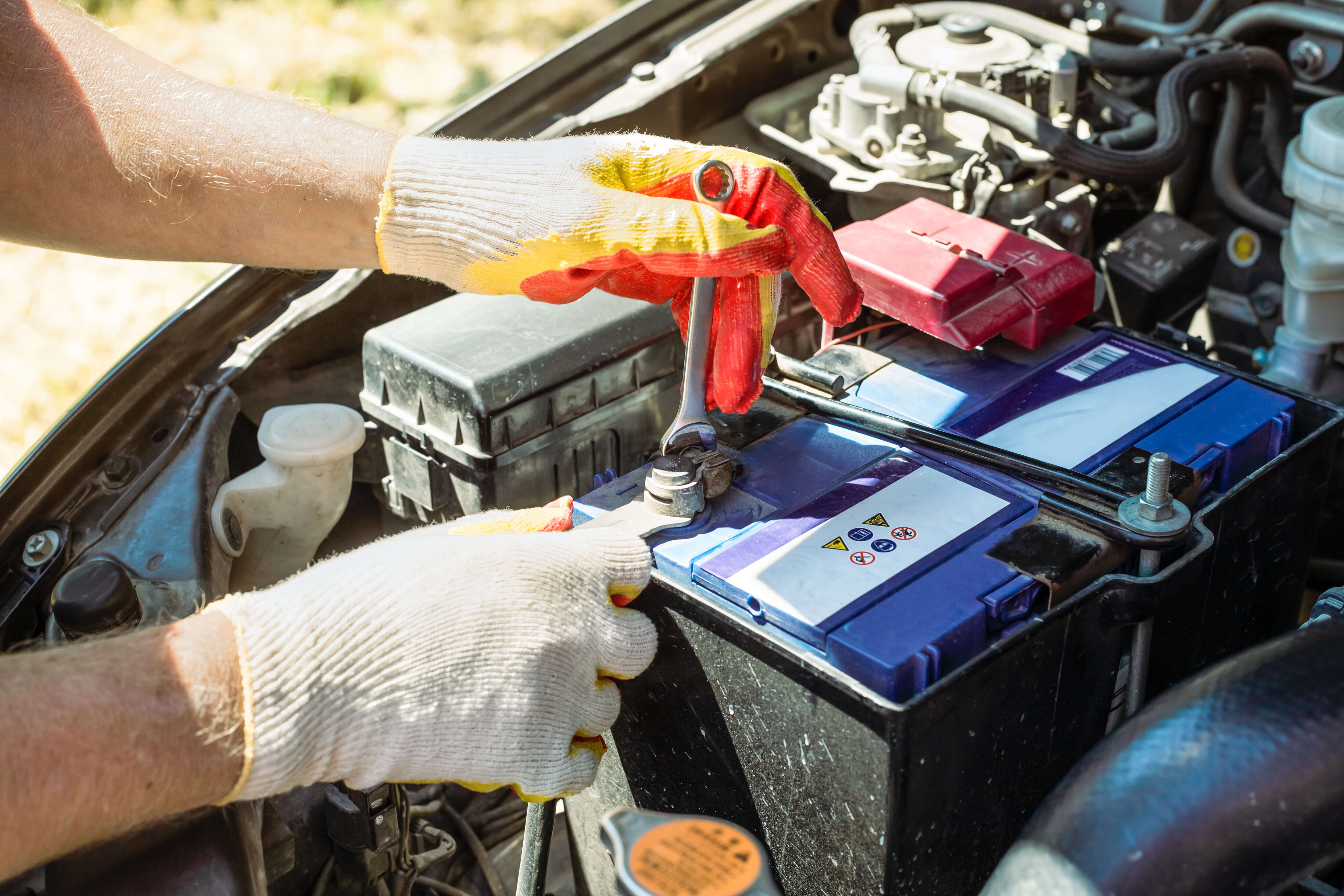
Wet Cell Car Battery
We've all been there – that sinking feeling when your car won't start, and you're left stranded with a dead battery.
It's the last thing you need when rushing to work or heading out on a road trip.
Wet cell batteries (also known as flooded batteries) are commonly used for older cars with less power. If your car has a wet cell battery, you can perform basic maintenance following the steps below.
How to check:
Before you roll up your sleeves, remember that safety comes first. Pop on some gloves and safety glasses – battery acid isn't something to mess with.
Now, let's get down to business. A quick look under the hood can tell you much about your battery's health. A clean battery tray is a happy one – keep it free from gunk and debris. While at it, give the battery itself a once-over for any signs of leaks or damage.
The lifeblood of your battery is its fluid, and it's easy to keep an eye on it. Peek under the caps or check the indicator (if it has one) to ensure the fluid level is just right – top it off with distilled water if it's looking a little low. But remember, not too much; you want to cover the plates without drowning them.
Corrosion is a battery's #1 enemy, so take a moment to inspect the terminals. If you spot a crusty white or bluish substance, it's time for a clean-up. A snug and spotless connection is critical to a healthy electrical flow.
Lastly, remember to give the battery's voltage a quick test. A simple multimeter can save the day. After letting your headlights run for a few minutes, switch them off and attach the multimeter set to 15-20 volts to the terminals.
When to service:
A 12.6 volts or more reading is the green light for a good battery. Anything less than 12.4 volts, and you might be on the road to a new battery sooner rather than later.
Car batteries typically have three to five years of life, but sometimes, they warn us that they're on their way out. Look out for the tell-tale signs: dim headlights, dashboard warning lights flickering on, and the engine taking its sweet time to start.
Enhanced Flood Battery (EFB) & Absorbed Glass Mat (AGM) Battery
EFBs are used for newer vehicles with simple start-stop functions while AGM batteries are suitable for cars that have higher energy consumption with auto start-stop and regenerative braking functions.
These types of batteries are typically low maintenance and spill-proof.
How to check:
First of all, remember to don your safety gear and remove any metallic objects such as watches, rings, keys and electronics.
Like conventional wet cell batteries, the terminals should be clean and corrosion-free. If you notice any signs of corrosion, clean it and let it dry properly.
Take a look at the cables and connectors to ensure that there are no loose connections and the cables are not frayed, split or damaged.
Finally, test your battery’s charge level using a multimeter according to the type you have, to ensure it is in optimum health.
When to service:
No matter which type of battery is in your car, the warning signs are similar, so remember to keep an eye out. Otherwise, you can also refer to the owner’s manual for more details.
D. Replacing Worn-Out Wiper Blades
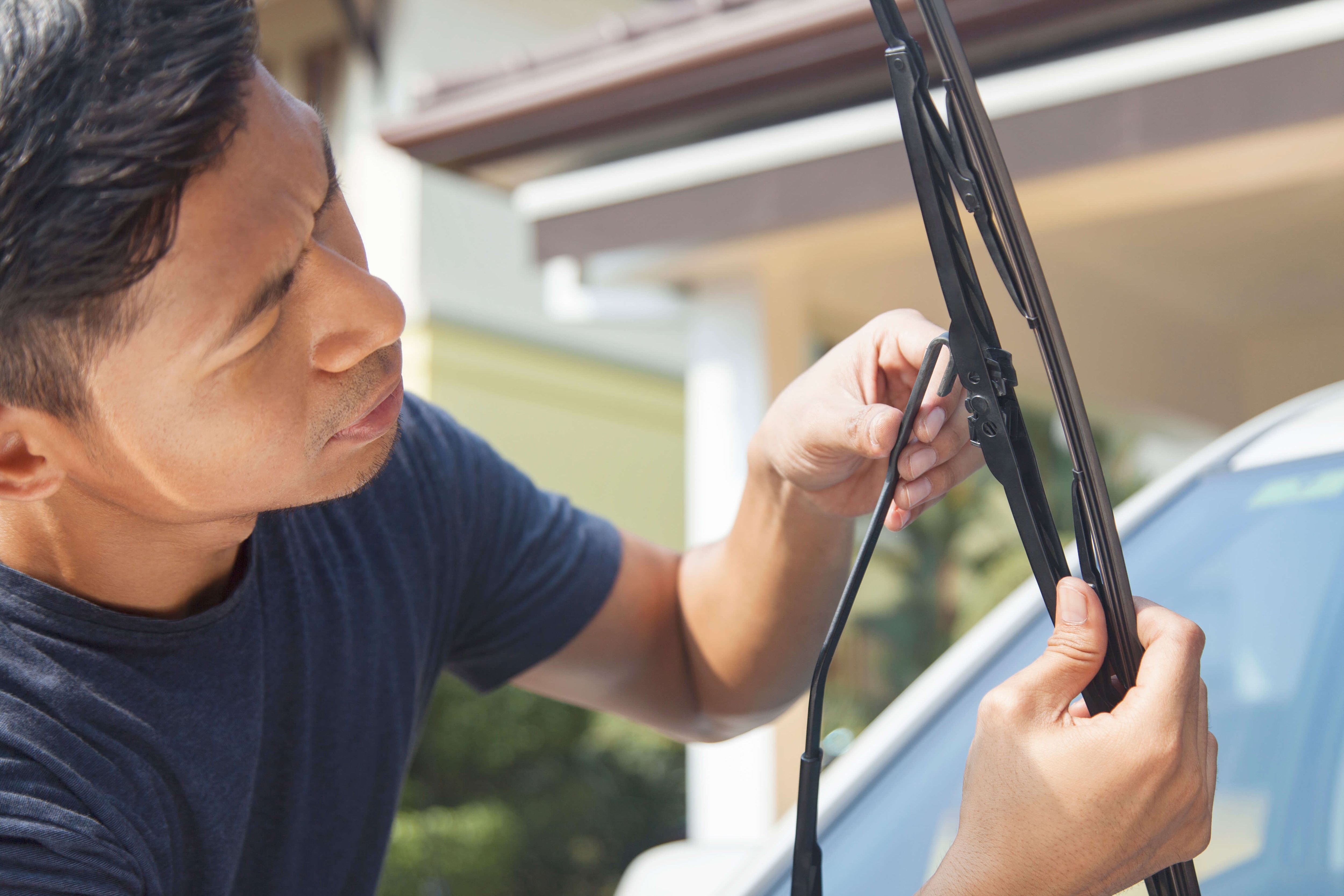
Wiper blades, crafted from rubber or silicone, are your windshield's best friends, but even they have an expiration date. They can wear down as time passes, leaving streaks or gaps that blur your vision.
When to service:
So, when should you give your wipers a fresh start? Keep an eye out for tell-tale signs like cracking or splitting. If your wipers shudder across the glass or leave behind a smeared canvas instead of a clear pane, it's time to change.
You should not wait until the rainy season to realise you can't see the road well.
Make it an annual ritual - swap out your blades once a year to maintain unobstructed vision.
E. Spark Plugs, Warning Lights and Air Filters
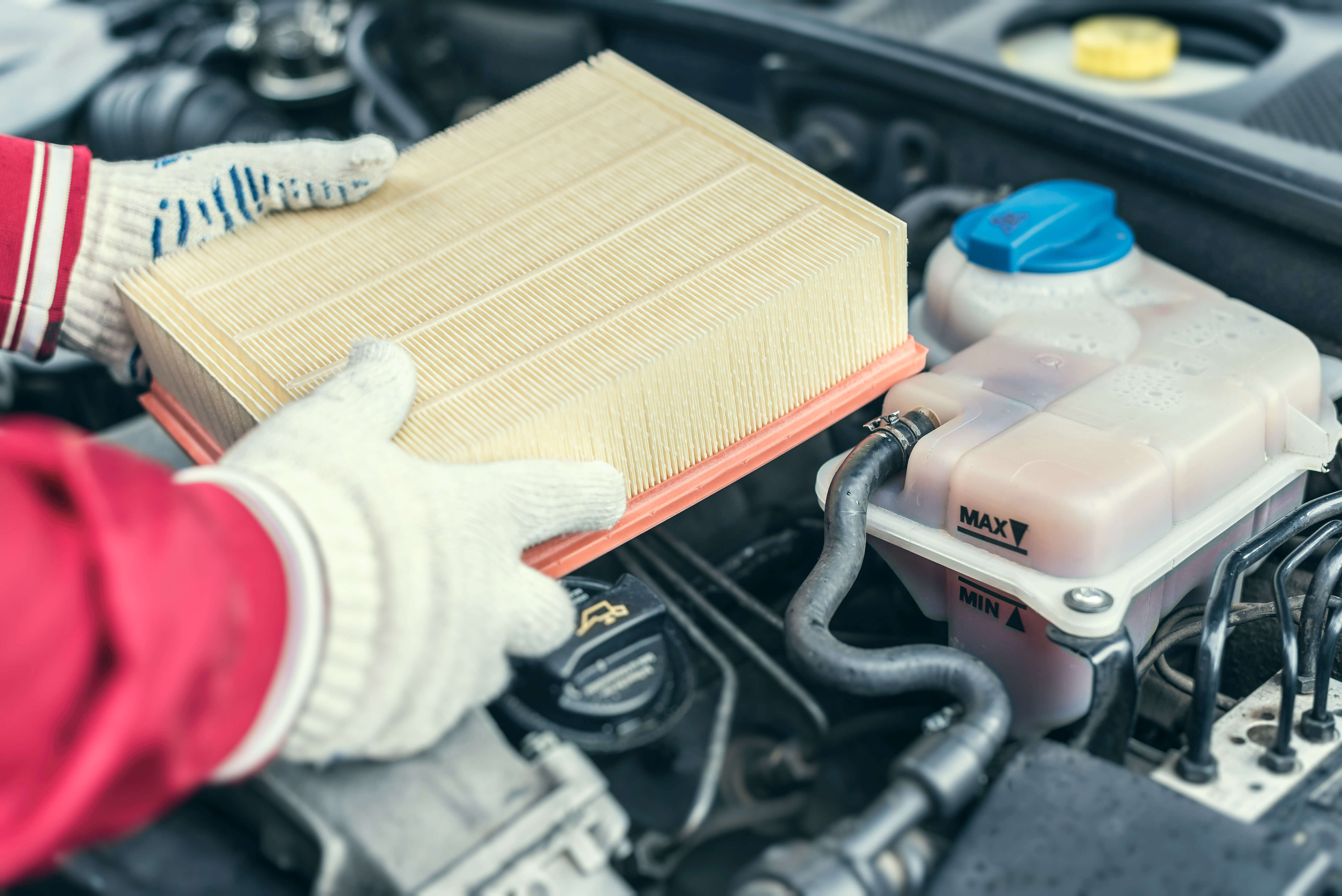
Checking Spark Plugs
Think of spark plugs as the tiny titans powering up your car's engine. They're crucial for a smooth ride, but you'll feel it when they falter.
When to service:
A sluggish start, a dip in power, or fuel efficiency that's just not what it used to be—these are tell-tale signs that your spark plugs might need some checking.
While spark plugs can last up to 50,000km, essential maintenance would help extend the design lifespan.
How to check:
The inspection is straightforward.
As always, let your engine cool its heels first. Then, disconnect the negative battery terminal before you touch the spark plugs (nasty electrical shock is unwelcome).
Use a socket wrench to remove the spark plugs. A gentle twist here, a careful pull there, and voilà! Your spark plugs are in your hands. Now, give them a good look.
A simple wipe with a cloth can clear off any loose debris, and a wire brush is your best friend for the more stubborn grime.
Remember, the plugs should be bone-dry before you put them back.
And here's a pro tip: a dab of anti-corrosion grease keeps rust at bay.
With your torque wrench in hand, secure the spark plugs back into their home, and you're all set.
Keep an Eye Out for Warning Lights
Your car is smart enough to alert you when something's amiss, often before a minor hiccup becomes a major headache. That's where your dashboard's symphony of warning lights comes in, each playing a pivotal role in your car's well-being narrative.
From the gentle reminder of a seatbelt ding to the urgent call of the check engine light, these signals are your car's way of communicating its health.
How to check:
Now, if a light does flicker to life, there's no need to panic. Take a breath and consult your trusty owner's manual—it's like a cheat sheet for your car's various moods and ailments.
Some lights might be a quick DIY fix, while others are a signal for professional help.
Cleaning Air Filters
Imagine your vehicle as a marathon runner; it needs a clear, unobstructed path to breathe and perform at its best. That's where the air filter steps in, acting as a guardian against dust and debris that could hinder your engine's performance. As a result, you get a long engine lifespan and optimal fuel efficiency.
When to service:
Regularly check the filter. Pop the hood, remove the filter, and give it a gentle bath in a cleaning solution. After a thorough drying, place it back.
Manufacturers usually recommend changing the filter every 20,000 km.
Service Intervals
Knowing the nuts and bolts that keep your ride smooth, you're already ahead of the game. Let's steer you through the service schedules that ensure your vehicle stays in top gear.
A. Scheduled Maintenance Checks
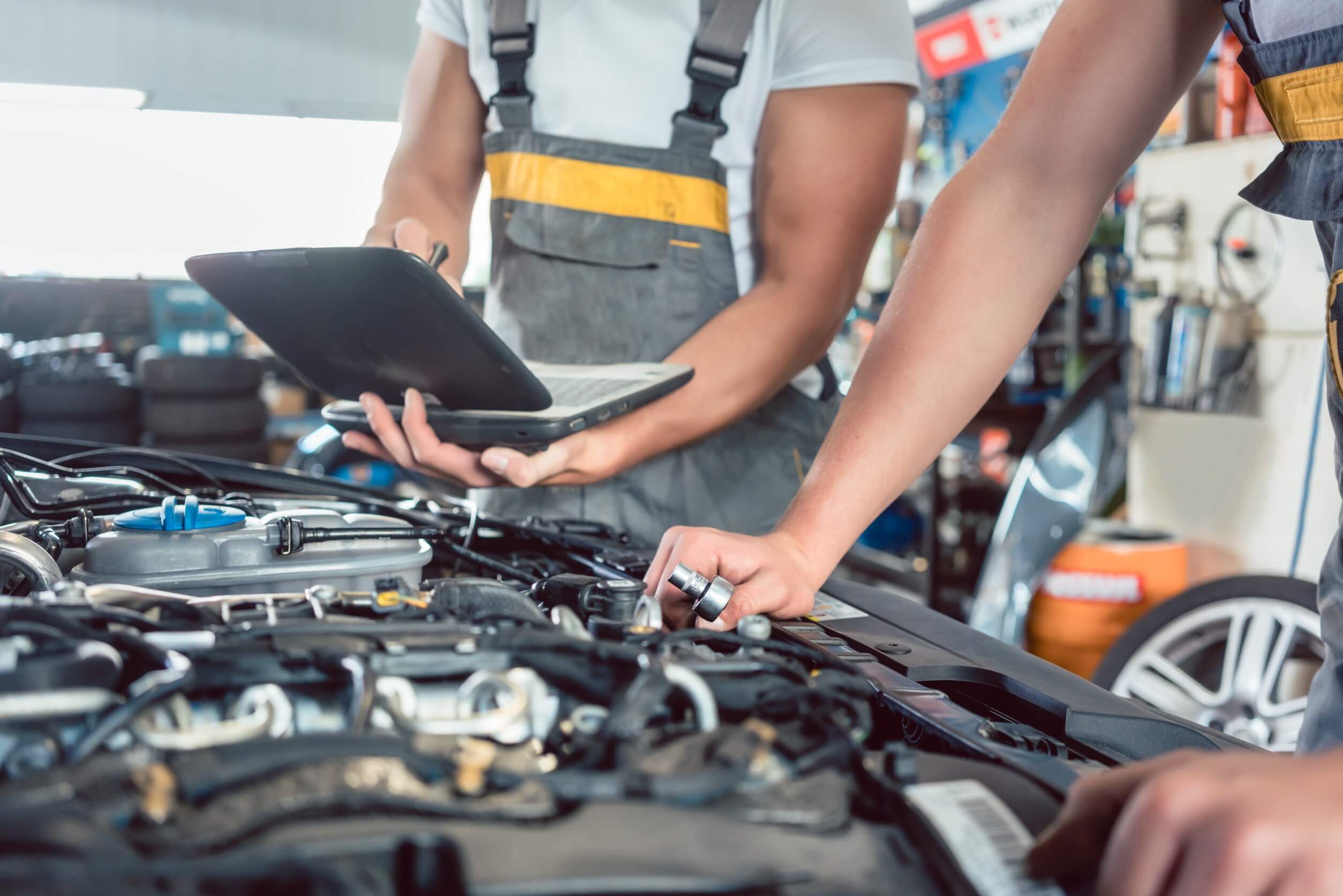
Short-Term Quick Checks
Think of short-term checks as your car's quick health check-up, like checking the tyre pressure and fluid level. Get into the habit of a monthly once-over check and once-off before any road trip, ensuring peace of mind before hitting the highway.
Long-Term Servicing
As your car ages, its service needs evolve. Brand-new vehicles often come with a maintenance honeymoon period and a warranty. Stick to the manufacturer's timeline like clockwork to keep that warranty intact.
A car with regular wear and tear should visit the mechanic every 10,000km or biannually – whichever comes first. But remember, your car's manual is your maintenance bible; it's tailored to your model, so consult it on service intervals.
Post-warranty, your mechanic becomes your guide. They'll map out a custom-fit service schedule for your car's needs. And, of course, your trusty manual is always there for verification.
B. Seasonal Car Maintenance
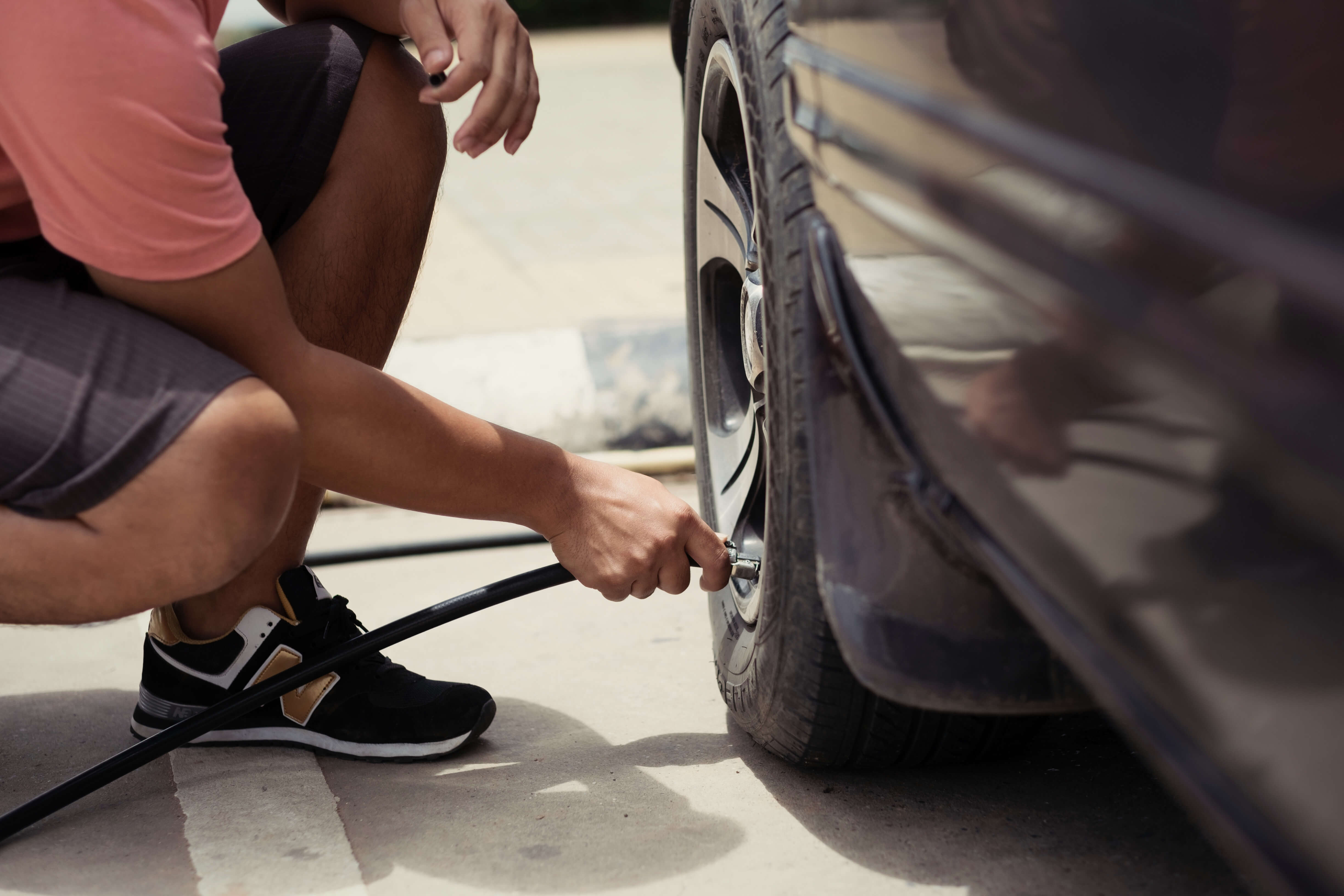
Rainy Season Driving
As Malaysia braces for the annual monsoon deluge, it's time to discuss gearing up your vehicle for the season's ultimate test.
Your pre-monsoon checklist:
1. Tyre Condition
The tyres are your car's steadfast warriors, gripping the road as sheets of rain try to skid you sideways. Check your tyre pressure and the depth of the tread. With the correct pressure and ample tread, your vehicle will cling to the slick streets like a gecko to a wall.
2. Windshield Wiper
Your wipers ensure you have an unobstructed view of the road ahead. If they're leaving streaks or chattering away, it's time for a swap. Clear vision equals safe driving, especially when the skies open up.
3. Headlight Health
Monsoon skies can turn as dark as twilight in a blink. Ensure your headlights are in top form. And don't forget to test your hazard lights—you need to use them in an emergency.
4. Brake test
Lastly, give your brakes a thorough inspection. Rainy roads demand more from these vital components; your safety hinges on their responsiveness. A quick test drive on a dry day can give you peace of mind before the rains come.
Preparing for Balik Kampung or Long Distance Driving
1. Emergency Kit Essentials
A well-stocked emergency kit is your first line of defence against the unexpected. Make sure it includes essentials like a robust power bank (in case your phone dies), reliable jumper cables, and a trusty car jack.
2. Tyre Pressure
Properly inflated tyres mean a smoother, safer ride, and don't overlook your spare—you do not know when you might need it.
3. Battery Performance
If it's showing signs of fatigue, don't hesitate to have it checked or, better yet, replaced before departure.
4. Fuel Levels
Lastly, fuel levels. It's simple, but it's easy to forget in the rush of peak travel times. Top off your tank before you hit the road to avoid the dreaded fuel light and the even more frustrating petrol station queues.
C. Checks After Minor Incidents

So, you've had a minor accident. Maybe it's just a scuff from that tight parking spot, a fender bender, a minor collision or hitting a pothole.
Do these quick checks:
- General Safety Inspection: Give your car a once-over. Are the tyres still looking sturdy? Do all your lights flash and shine as they should? And that windscreen – still crystal clear?
- Damage to the Vehicle Body: Let's check the car's exterior. Are any new dents or scratches decorating the body? Keep an eye out for any cracks that could turn into costly problems later.
- Electrical System test: Flick those switches and press those buttons. Check the Headlights, indicators, the horn and the batteries.
- Fluid Levels: Check the engine oil, brake fluid, coolant, and power steering fluid – open them up if needed.
- Brake system: Give that brake pedal a press. Does it feel firm or squishy? Squishy isn't good. Check the brake fluid, too.
- Undercarriage: Peak under your car. Look for any signs of damage, leaks, or corrosion.
- Engine Sound: Start the engine. Hear anything out of the ordinary? Are there any clinks, clunks, or whirrs that weren't there before?
DIY vs Professional Servicing
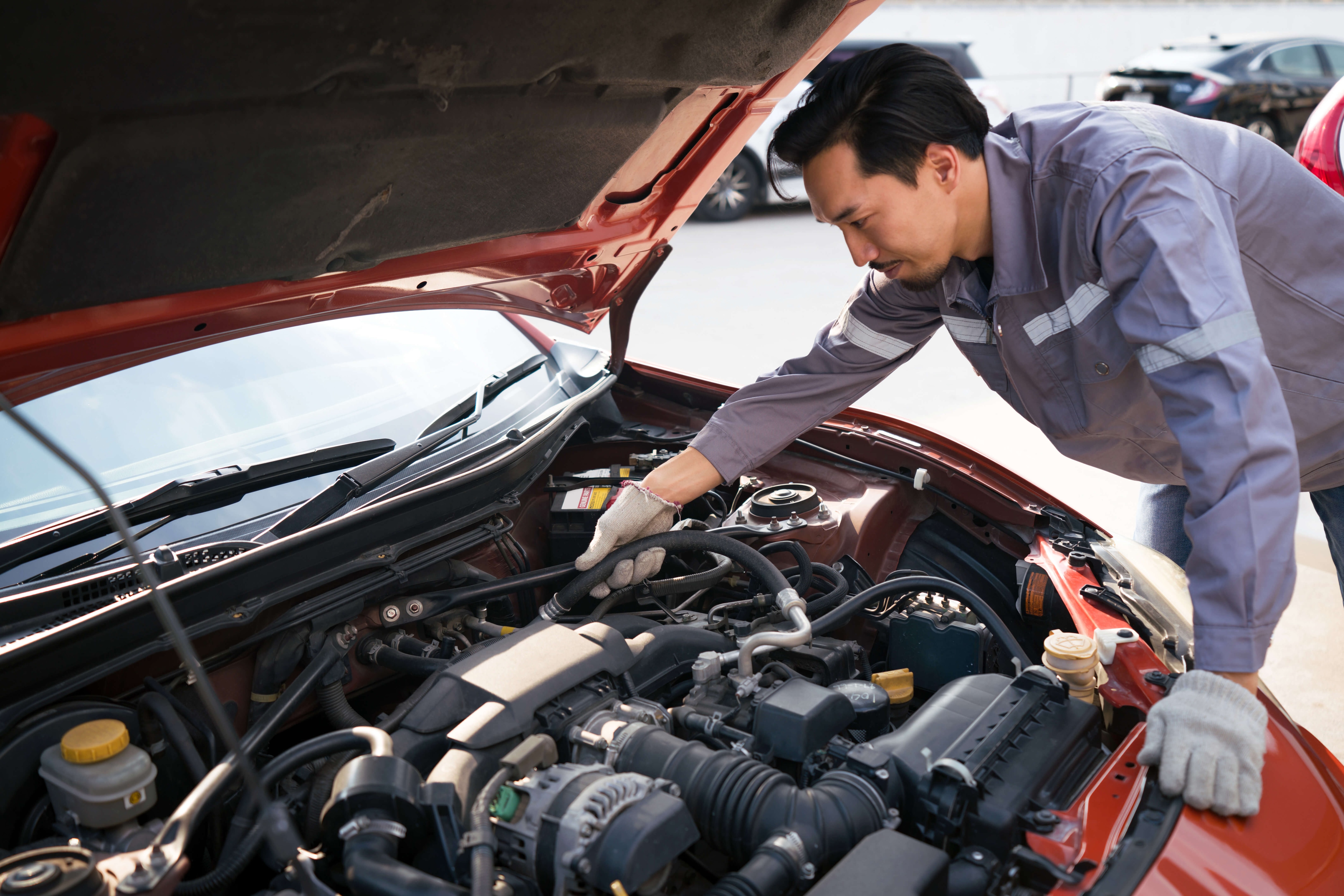
When you're faced with car maintenance, you hit a crossroads: DIY or hand it over to a seasoned mechanic?
Rolling up your sleeves can pinch pennies, but weighing that against your experience and skills is crucial.
Let's break down some factors to help with decision-making:
- Skill Level: Honestly gauge your skills. How complex is the job? If you're not confident, it might not be worth the risk.
- Time: DIY could eat up your weekend, especially if you need to be tooled up or are still learning the ropes.
- Safety: Jobs like checking brakes and tires? These are critical for your ride's safety. Always let the professionals handle these.
- Costs: Yes, professionals charge more upfront, but they can also save you from expensive mistakes in the long run.
- Warranty: Check your car's warranty. Sometimes, going DIY can void it if the manual says "authorised service only.
Benefits of Professional Servicing
Servicing your car right can extend its life and enhance its performance. Here are a few benefits you'll get from bringing the vehicle to a reputable service centre:
1. Expert Level Inspection
Think of pro mechanics as your car's personal trainers – they have the know-how and the tools to keep it in top shape. Like a health check-up, they spot the small stuff before it becomes a wallet-draining headache.
2. Use of Genuine Parts
Genuine parts are the real deal, tailor-made to work with your car without a hiccup. This means fewer problems on the road and a ride that feels brand new and safe every time.
3. Increased Vehicle Lifespan
Just like eating right keeps you going, regular servicing is your car's secret to a long and healthy life span. It's all about nipping problems in the bud to avoid the significant issues that can send your vehicle to an early retirement.
When it's time to sell, a well-maintained vehicle gets the best offer.
4. Retain Warranty
Sticking to your car's service schedule and recommendation ensures the warranty remains valid. It's proof that you've played by the rules, so if something goes wrong, you're covered.
5. Insurance Claims
If you ever need to make an insurance claim, your service records are like gold. They show you've done your part in keeping your car in proper shape, which can be a big thumbs up in your favour. It's about ensuring you're in the clear if the unexpected happens.
Finding a Reliable Car Service Center
Understanding the perks of a reputable car service centre is one thing, but how do you spot one? Here's what to keep in mind:
1. Dive Into the Reviews
Tap into the power of the internet and scour through online reviews. They're like a treasure trove of honest feedback. Keep an eye out for positive and generative reviews to get the complete picture of what you're signing up for.
2. Manufacturer-Authorised Excellence Centres
When you take your car to a manufacturer-authorised service centre, it's as if you're getting a thumbs-up straight from where it was made. These places are about your car's make, with techs who know your vehicle inside and out because they're trained just for your brand.
3. Inspect the Facility
Why not drop by the service centre? It's a great chance to check out their operation. A clean shop, a neat waiting area, and a crew that knows their way around the latest tools are all signs that they mean business when it comes to car care.
4. Transparency
People like to be kept in the loop, especially when it comes to car maintenance. A service centre worth its salt will break down its recommendations and costs with no jargon attached. They'll give you the lowdown to make intelligent choices without any guesswork.
Common Car Maintenance Myths Debunked
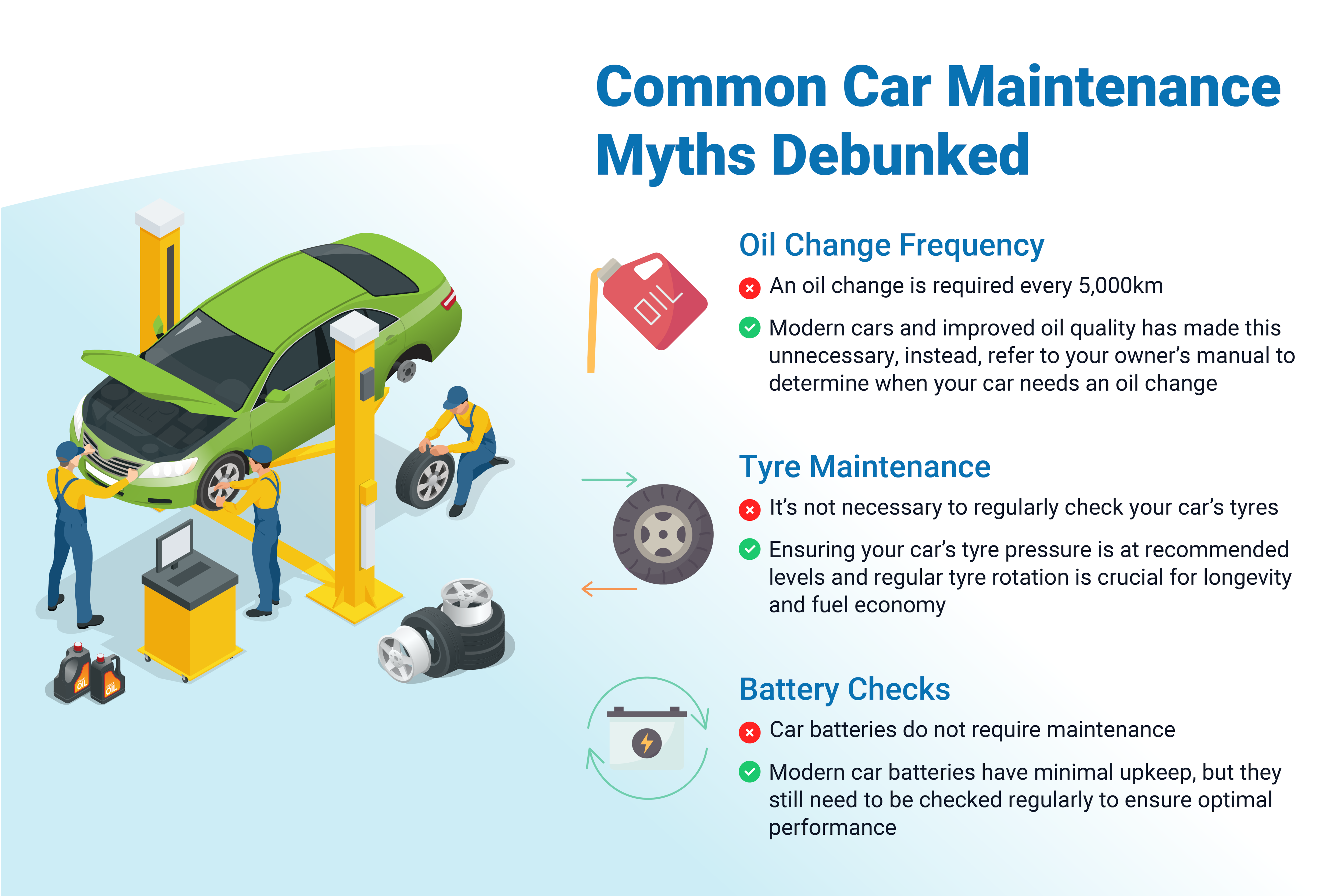
Navigating the world of car care can sometimes feel like a minefield of myths. Let's clear the air and set the record straight so you can focus on what truly matters: keeping your ride running smoothly without any unnecessary fuss.
A. Oil Change Frequency Myths
There's a stubborn old tale that insists on an oil change every 5,000km, but modern cars and improved oil quality beg to differ. Many of today's vehicles are perfectly happy cruising for up to 10,000km or more before needing an oil change.
The key is to play by your car's rules, not hearsay. Your owner's manual is your best friend here, offering the nitty-gritty when your specific model requires oil servicing.
B. Misconceptions about Tyre Maintenance
Your tyres aren't invincible superheroes—they need a bit of TLC to keep them in hero shape. Ignoring them can lead to a less-than-epic performance and some risky business on the road.
Make it a habit to check your tyre pressure regularly; it's a breeze and keeps your tyres in top form for the journey ahead. Stick to the pressure levels recommended by your car's manufacturer to dodge the pitfalls of under or overinflation—think of it as your tyres' sweet spot for longevity and fuel economy.
And don't forget to give them a spin—tyre rotation, that is—to spread the wear evenly and get the most miles out of them.
C. Clarifying the Importance of Regular Battery Checks
Your car's battery is like its heartbeat, vital for bringing the engine to life and keeping the electrical system working. But it's easy to take it for granted until one day, silence.
Stay ahead of the game with regular battery health checks. A quick voltage test with a multimeter or a stop by your local auto shop can reveal a lot about your battery's condition.
And a little elbow grease to keep those terminals clean from corrosion will go a long way in ensuring your battery's got the juice when you need it.
If your battery's acting up or showing signs of wear, don't hesitate to get a professional's eyes on it.
Frequently Asked Questions
A. How Often Should I Change My Oil?
The right time to change your oil isn't one-size-fits-all; it depends on what your car's manual says, the type of oil you use, and your driving style. To keep things simple, peek at your owner's manual or chat with your favourite mechanic to nail down a schedule that suits your ride.
B. What Should I Do If My Check Engine Light Comes On?
When that little check engine light pops up, your car says, "Hey, I need some attention here!" Stay away from playing the guessing game; take your vehicle to a pro mechanic quickly. Ignoring it could be like ignoring a small leak that turns into a flood – costly and messy.
C. When Should I Replace My Brake Pads?
The lifespan of your brakes is a mix of your driving habits, your car's model, and the quality of the brakes themselves. To stay safe, let a mechanic look at them when you go for regular servicing.
D. How Do I Know If My Tyres Need Replacement?
Watch for signs of wear, like uneven tread or visible damage. And remember, if the tread depth dips below 1.6mm, it's time for new tyres – it's the law in Malaysia. When in doubt, a tyre specialist is your go-to for advice.
E. Is Regular Car Maintenance Expensive?
Think of regular car maintenance as an investment, not a cost. Skipping out on upkeep can lead to hefty repair bills down the road. Stick to your car maintenance checklist, and you'll dodge those nasty surprises. Plus, you'll get the peace of mind with a car that runs like a dream.
Keep your car running smoothly by sticking to a simple maintenance routine above—it's the secret to a long-lasting, reliable ride.
As you prioritise safety and reliability, remember the shield that keeps you financially secure on the roads: car insurance.
Just as you wouldn't neglect your oil changes, don't overlook the peace of mind with a solid insurance plan.
Drive safe and with the assurance that you and your car are well taken care of.
Disclaimer: This blog post is strictly for informational purposes, and should not be taken as advice of any kind. Kurnia disclaims all responsibility for any losses resulting from reliance on the information contained in this article.